| Thursday, November 01, 2007 |
| The China Chronicles - Xi'an |
There are other sights in Xi'an aside from the Terra Cotta Army, although perhaps none so dramatic or impressive.
If I thought I was the subject of a lot of interest and photographs from the Chinese in Beijing, put me in a privately chauffeured Chinese Zhongua sedan, and everywhere I went I felt like a one woman Hollywood premier with curious onlookers wondering who the woman behind the shaded windows was and why she was so important. If you remember, I paid a whopping $250 US for two days of private touring with car, driver, interpreter, hotel, meals, the whole thing. Despite the relative low cost, it's still very unusual for Westerners to travel alone in China, much less a woman. Go figure.
My driver was "Mr. John" who spoke no English, and my guide was a 24 yr. grad student named Vivienne. Vivienne seemed a bit bored at most of the sites - mostly because she's been touring the same half dozen sites for four years now. Just trying to make enough money for school, and I don't think tour guides make much. They probably depend mostly on tips from Western tourists.
My hotel was decent. Not luxurious, but well situated right near the City Wall and the Bell and Drum Towers downtown. Hence the name "Bell and Drum Tower Hotel". There was even a guy selling oranges out front when I checked in:
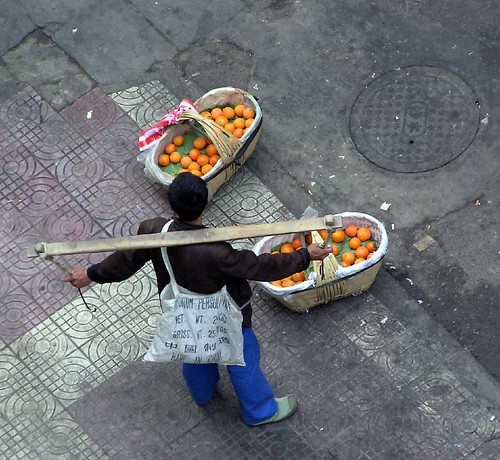
The morning after I arrived, I had been talking to my brother on my cell phone after breakfast waiting for Mr. John and Vivienne to pick me up, and I suddenly heard this tremendous drumming outside my hotel. I grabbed my camera and ran out front to see this:
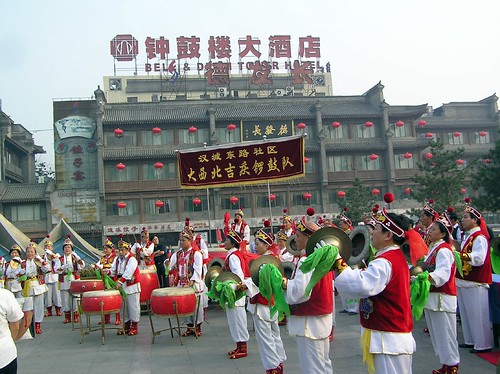
There was quite a crowd assembled, but I couldn't tell what the celebration was for. There were no Westerners in sight, and no one spoke English. I showed these pictures to Vivienne when she arrived, and she said the banner merely says "Northwest Drum Corps". At least they were fun an colorful.
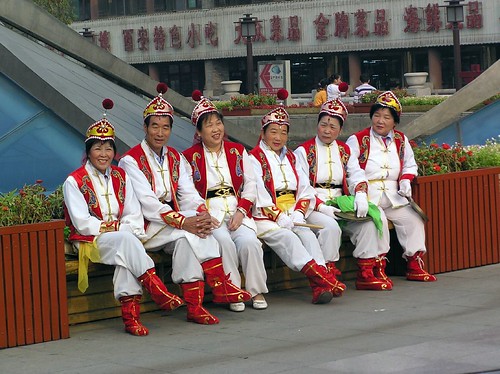
My hotel was also very close / adjacent to the Muslim quarter in Xi'an, and very near the Great Mosque of Xi'an, so I headed over there once I checked in. As I progressed through the various gates and courtyards towards the main mosque, the call to evening prayer began and suddenly I was in the path of dozens of men in tunics and white skull caps that appeared seemingly out of nowhere. I lingered for a while in the pious solemnity and then walked through the Muslim quarter where the street vendors were setting up grills for the evening kabobs.
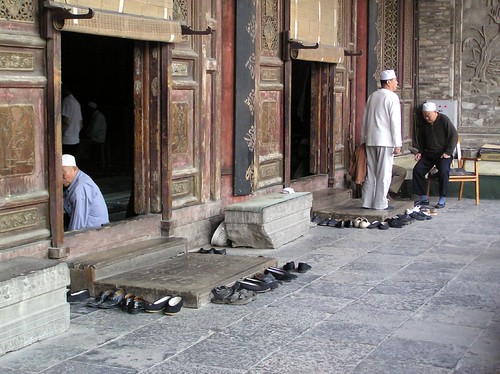
Some even park their bikes in order to get to prayers on time....

Women are not allowed in the mosque, but the grounds are very impressive with many gates and inner courtyards which have been added over time since the Tang Dynasty in the late 600 - 700's. There is very little Islamic character to the Mosque, it's entirely Chinese. No domes, Arabic letters, moons, or anything else you associate with Islam. The mosque is simply beautiful and the late afternoon light softened the colors of the gardens and grounds. I found myself wandering much of it alone - free from busloads of tourists and sightseers.
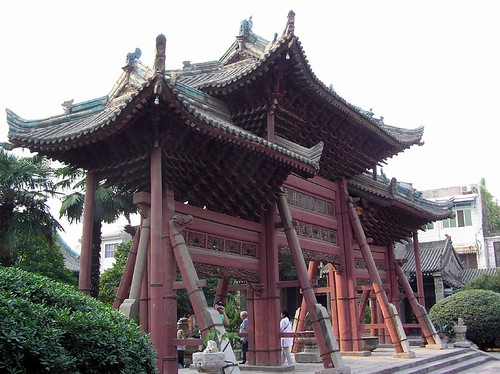
Adjacent to the mosque is the Muslim Marketplace. Stall upon stall of dried fruit, nuts, teas, spices, cakes and knick knacks of all possible variety. I bought a bag of dried mango slices to snack on and walked through saying "boo-yao" (don't want) as they hawked everything to me. "Ra-dee, Ra-dee Heh Roh Ra-dee!".
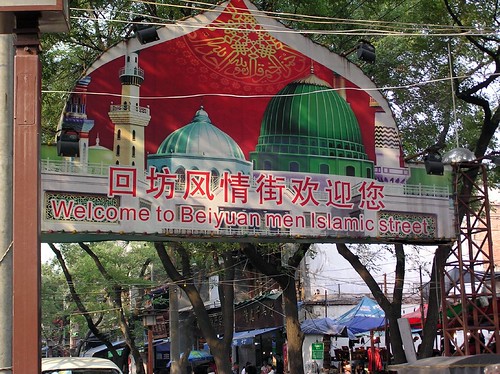
You can literally get anything here.
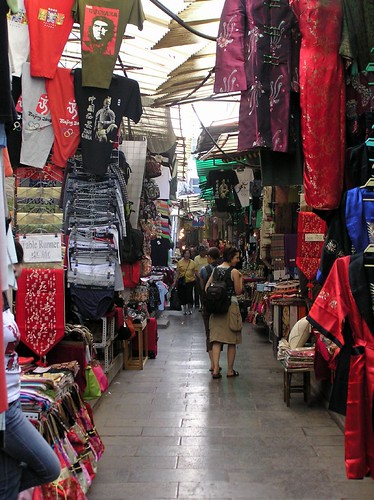
These are Moon Cakes. Tradition is that you buy them for family and friends for the Harvest Moon Festival. They're kind of like Christmas cookies in that you get them from friends, family, neighbors and co workers, and their value is often judged by the ornateness of the package, not the contents. Nevertheless, they come in a wide variety of flavors and fillings. My favorite was mango.
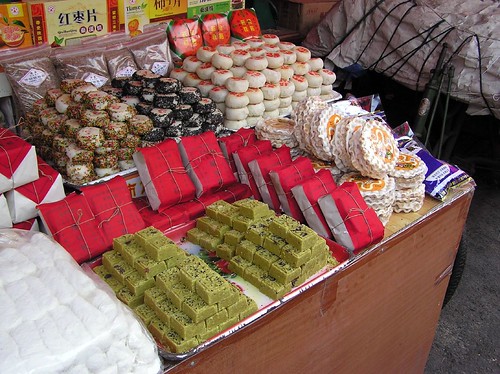
The City Wall of Xi'an is also impressive. You can bike or walk the perimeter of the ancient wall. It's 13.7 km all the way around. This is a view of the wall from up top:
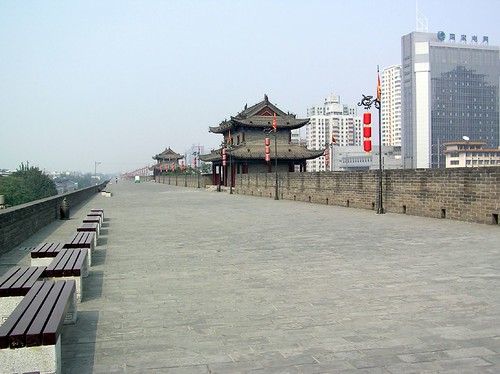
There's even a moat surrounding the city...
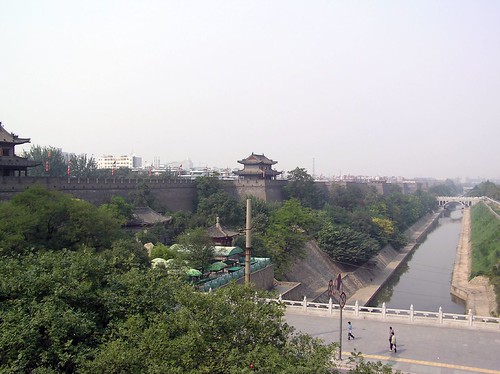
I also visited the Shanxii province museum, which was pretty typical of most Chinese museums. Very little curator ship, large, dark, largely empty rooms with a row of dusty Plexiglas cases lining the wall with small plaques giving meager identification - it at all. Vivienne was helpful in this regard, and I left having at least a better idea of the various Chinese dynasties and their timeline in history.
After the museum, we headed to the Giant Wild Goose Pagoda, but the haze and pollution were too heavy to get a really good photo of it.
I found it interesting that Buddhism and Islam were present in such a large way, and at almost the same time during the Tang Dynasty. In most areas of China, the Buddhists preceded Islam and were later replaced by it.
Coming out of the temple grounds we pass a new development being constructed which despite the curved roof details, looks like a very Western, almost Disneyesque version of how China should appear. Behind the colorful facade are grey walls of concrete with few windows and even less character.
Not wanting to dine alone in the evening, I had signed up for what I THOUGHT was going to be an authentic evening dinner performance of Tang Dynasty Music. Instead, I got a thoroughly Rococo theater dripping with red velvet and gold. It was very brothel like. The show was Vegas in all respects. The music was good and well performed, but it wasn't what I expected.
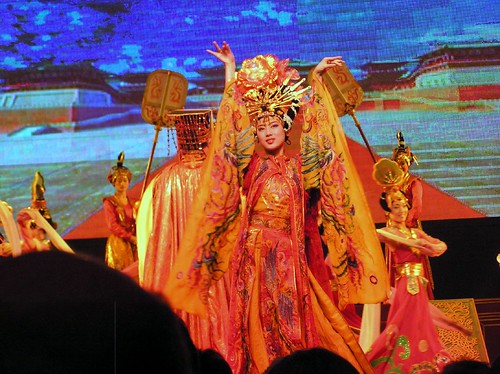
This was followed by a bad banquet of greasy dumplings where I was seated with a group of very loud, nouveau riche Italians. I was glad to get back to the hotel and get some sleep.
The last place I visited was also interesting. The Hot Springs not far from the Terra Cotta Army. While the Hot Springs were the playground of the Tang Dynasty royal court and especially the empress, the Chinese find them even more famous for the Xi'an incident, which occurred on October 22, 1936. The Hot Springs are intriguing because it presents a political statement that only the Chinese can perfect. The rooms that Chiang Kai Shek and his soldiers stayed in are preserved as they were, and there is much made of the cowardice that Chiang Kai Shek showed as he escaped to the mountain directly behind the springs and hid in a cave in his pajamas and bare feet during an early snow. This incident lead to Chiang Kai Shek eventually fleeing the KMT into self imposed exile on Formosa (known today as Taiwan). I remember learning about this in school, but in the Western version Zhang and the KMT are the bad guys, not the other way around.
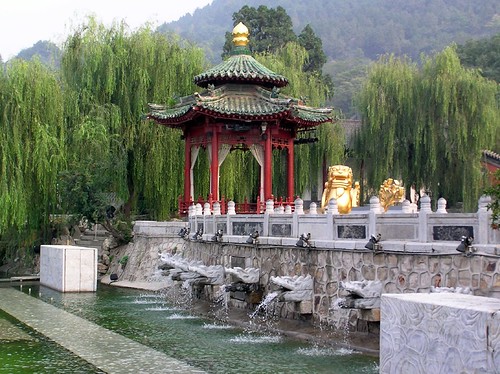
Next Up: Back to Beijing and the Summer Palace. |
posted by Broadsheet @ 11:11 AM   |
|
|
|

